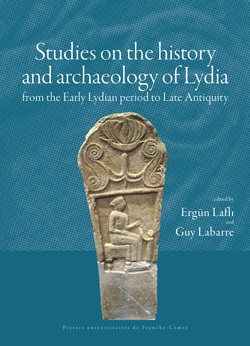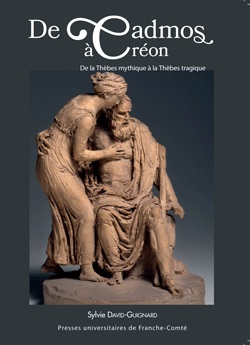Deprecated: pg_query(): Automatic fetching of PostgreSQL connection is deprecated in /var/www/ista/html/publista/Commun/dbHelper.php on line 104
Deprecated: pg_query(): Automatic fetching of PostgreSQL connection is deprecated in /var/www/ista/html/publista/Commun/dbHelper.php on line 154
Deprecated: pg_query(): Automatic fetching of PostgreSQL connection is deprecated in /var/www/ista/html/publista/Commun/dbHelper.php on line 165
Deprecated: pg_query(): Automatic fetching of PostgreSQL connection is deprecated in /var/www/ista/html/publista/Commun/dbHelper.php on line 165
Deprecated: pg_query(): Automatic fetching of PostgreSQL connection is deprecated in /var/www/ista/html/publista/Commun/dbHelper.php on line 198
Deprecated: pg_query(): Automatic fetching of PostgreSQL connection is deprecated in /var/www/ista/html/publista/Commun/dbHelper.php on line 198
Deprecated: pg_query(): Automatic fetching of PostgreSQL connection is deprecated in /var/www/ista/html/publista/Commun/dbHelper.php on line 198
Deprecated: pg_query(): Automatic fetching of PostgreSQL connection is deprecated in /var/www/ista/html/publista/Commun/dbHelper.php on line 198
Deprecated: pg_query(): Automatic fetching of PostgreSQL connection is deprecated in /var/www/ista/html/publista/Commun/dbHelper.php on line 261
Guy LABARRE, Ergün LAFLI
Table of contents List of figures List of abbreviations Foreword Antonio GONZALES An introduction to Lydian studies Ergün LAFLI, Guy LABARRE Part I: Lydia in the third and second millennia B.C. 1 Protohistorical excavations at Hastane Höyük in Akhisar ... voir la suiteNihal AKILLI 2 Aššuwa, ᾿Ασία and the land of Lydians Michele R. CATAUDELLA Part II: Historical and other aspects of the Lydian period and the early Lydians 3 Chronology of Lydian dynasties Alexandar PORTALSKY 4 Malis: a new Lydian goddess Annick PAYNE, David SASSEVILLE 5 Lefs: a Greek god in Lydian disguise. Ζευσις: a Lydian god in Greek disguise, and some Luwian gods too Diether SCHÜRR 6 Determining the value of the arrow-sign in Phrygian and Lydian Fred C. WOUDHUIZEN (†) 7 Influencing Lydia: the “Kybele Shrine” from Sardis in its Near Eastern and Greek Contexts Tamás Péter KISBALI 8 Some remarks on the Persian Royal Road (Herodotus V.52–54) Yanis PIKOULAS (†) 9 Diodorus and the Halys oracle Annalisa PARADISO 10 The poet Pindar and Lydian Pelops James ROY 11 Lydian seals from the western Pontic area Costel CHIRIAC, Lucian MUNTEANU 12 “Who is Gyges?” once again: assessing the Carian connections of the first Mermnad king of Lydia Liviu Mihail IANCU 13 The Artemis cult in Lydia and the Lydian Girls Choir: a political evaluation Ayşen SINA 14 Pissuthnes, satrap of Lydia Cinzia Susanna BEARZOT 15 Lydian and Lycian arts in the context of Achaemenid Anatolia: a comparative approach Fabienne COLAS-RANNOU 16 Replicating the Lydian treasure from a Turkish perspective Ergün LAFLI, Maurizio BUORA Parts III: Historical and other aspects on Hellenistic and Roman Lydia 17 The Greek cities of Lydia during the First Mithridatic War (89–85 B.C.) Fabrice DELRIEUX 18 The historical geography of Hellenistic and Imperial Lydia: the literary and numismatic evidence Pierre-Oliver HOCHARD 19 Lydia in proverbs, idiomatic expressions, and exemplary Latin stories Étienne WOLFF 20 Heleis: a chief physician in Roman Lydia Gaetano ARENA 21 Medicine in Roman Lydia: a close relationship with imperial power Margherita G. CASSIA 22 Remarks on the imperial cult of Lydian Philadelphia based on classical literary sources Hüseyin ÜRETEN, Ömer GÜNGÖRMÜŞ 23 The cult of Men in Lydia Guy LABARRE 24 An amazing oracle of Apollo of Claros and the question of the supreme god (Macrobius, Saturnalia I.18.20): Zeus, Hades, Helios, Dionysos, and Iaô Charles GUITTARD Part IV: Material culture of Hellenistic and Roman Lydia 25 A preliminary report on the recent archaeological discoveries in Lydia and the Upper Cayster Valley Ergün LAFLI 26 Building inscriptions from Roman Lydia Maria KANTIREA 27 Anatolian koine of burial practices: transformation of elite burials Erik HRNČIARIK, Lucia NOVÁKOVÁ 28 A preliminary report on the Roman pottery from Tabae Oğuz KOÇYIĞIT 29 The use of Roman fired bricks in Lydia and neighbouring regions Julia Cecile MARTIN 30 Arms factories at Sardis and the supply of Roman eastern auxiliaries Damien GLAD 31 An archaeological note on Saittai Enes HANÇER Part V: Early Byzantine Lydia 32 A contribution to the study of Lydia in the Early Byzantine period Dimitris P. DRAKOULIS 33 The Early Byzantine province of Lydia based on sigillographic evidence Werner SEIBT 34 The relation of Priscianus of Lydia to Byzantium during the wars of Justinian I with the Sassanian empire Katarzyna MAKSYMIUK Part VI: Varia anatolica occidentalia 35 Ephesian amphorae in Rome in the imperial period Giorgio RIZZO 36 Trade from Chios and Phocaea (fourth–seventh century A.D.) between written and archaelogical sources: a methodological approach Daniele TINTERRI Part VII: Selected abstracts on recent research in Lydia 37 Geoarchaeological-paleogeographical observations on Hypaepa and its surroundings in southwestern Lydia Serdar VARDAR 38 The Hittites in Lydia Ahmet ÜNAL 39 Three new sites in southeastern Lydia: Kapancık, Gerdekkayası, and Ören Harun OY 40 Electrum coins from Lydia and the surrounding area in the collections of the Numismatic Museum in Athens George KAKAVAS 41 Lydian personal names and the question of Lydian ethno-linguistic identity Rostislav ORESHKO 42 New examples of Archaic architectural terracottas from Lydia Sedat AKKURNAZ 43 Anatolian pottery from Panticapaeum Natalia S. ASTASHOVA 44 A Lydian tale about the Etruscans: the migration of Tyrrhenos to the west Dominique BRIQUEL 45 Evaluation of burial customs in Lydia in the light of the finds from the necropolis of Tralles Arzu ÖZVER 46 Family structure in Roman Lydia Marijana RICL 47 Anatolian imports in Slovenia Verena PERKO, Tina ŽERJAL 48 Brickwork patterns on Church at Sardis: structure and meaning Jasmina S. ĆIRIĆ Abstracts and keywords in English / Türkçe Özetler ve Anahtar Kelimeler
Deprecated: pg_query(): Automatic fetching of PostgreSQL connection is deprecated in /var/www/ista/html/publista/Commun/dbHelper.php on line 261
Avant-propos Christine MAUDUIT, Rossella SAETTA COTTONE Identités recomposées et personnages inédits Le parcours féminin d’Électre ou les ruses de la mal-mariée Chloé DRAPPIER SAUTEREAU Le noble paysan : du « divin porcher » ... voir la suited’Homère au Laboureur de l’Électre d’Euripide Julien BOCHOLIER Fra apparenza e realtà. Il Vecchio e la scena di riconoscimento nell’Elettra di Euripide Mattia DE POLI Regards croisés sur Clytemnestre et Égisthe Clitemestra nell’Elettra: la diffrazione del paradigma Maria Serena MIRTO Clytemnestre comme la « nouvelle » Hélène : Euripide interprète de Gorgias (à propos de l’Électre) Rossella SAETTA COTTONE Clitemestra e le sue figlie: da Elettra a Ifigenia in Aulide Valeria ANDO Un nouveau rôle pour Égisthe ? Christine MAUDUIT Agir ou ne pas agir ? Chœur et choralité dans l’Électre d’Euripide Pierre VOELKE Pylade dans l’Électre d’Euripide : quelles fonctions dramatique et poétique pour un personnage silencieux ? Marcus GARZON Caractérisation et construction des personnages Deux temporalités pour une même séquence mythique ? Les personnages et le temps dans l’Électre d’Euripide Michel FARTZOFF Quand Oreste rencontre Électre : des personnages faits de mots et de gestes Matteo CAPPONI The Mind Style of Electra: Displacement, Negation, Death Evert vAN EMDE BOAS Présentation des contributeurs
Deprecated: pg_query(): Automatic fetching of PostgreSQL connection is deprecated in /var/www/ista/html/publista/Commun/dbHelper.php on line 261
COLLECTIF
DOSSIER : CAHIERS DE L’ATELIER CLISTHENE, V Avant-propos Michel FARTZOFF, Karin MACKOWIAK, Arnaud MACÉ Introduction. La circulation du savoir à l’époque de Thalès (et peu après) Livio ROSSETTI Thales, The “Pythagorean Theorem”, and Technological Co ... voir la suitentext Robert HAHN Résonance du corps, résonance de l’âme : le phénomène de l’écho dans les théories de l’audition et de la persuasion, d’Alcméon à Platon Lora MARIAT Corps et âmes dans l’Économique de Xénophon. Sur un aspect de la pensée économique en Grèce ancienne Étienne HELMER The Political Welfare: Theory and Practice in Ancient Greek Thought, from the Origins to Socrates Aikaterini LEFKA Las mujeres como motor de cambio en la tiranía de los Pisistrátidas Unai IRIARTE Cretan Soldiers at the Seleucid Court and the Enigmatic Case of Lasthenes: from μισθοφόρος to ἐπὶ τῶν πραγμάτων? Lorenzo PAOLETTI Le temps qui passe. Présence et représentations du temps dans les tribunaux athéniens Nicolas SIRON Ἀντίπατρος ἀδελφιδοῦς: Was Antipatros son of Epigonos of Telmessos the “Nephew” of Antiochos III? Benjamin SCOLNIC Apameia on the Euphrates, Macedonoupolis and Seleucid Forms of Political and Territorial Control José PASCUAL Dieux et déesses d’Arcadie dans le récit de Pausanias (livre VIII). Entre naissance(s) divine(s) et thériomorphisme Jean-Christophe VINCENT Contribution à l’étude des systèmes de fortification et de signalisation tardo-antiques sur le territoire littoral et insulaire de la Dalmatie septentrionale à l’aide d’un SIG Ana-Marija KRNIĆ, Filip LOVRIĆ Los escipiones visitan a Afrodita: los santuarios hispanos de la diosa en el contexto de la segunda guerra púnica Jorge García CARDIEL, Eduardo Sánchez MORENO L’évolution du culte impérial dans les provinces grecques au lendemain de la mort d’Auguste Gabrielle FRIJA Movilidad geográfica en la península ibérica en época imperial: estudio de los inmigrantes procedentes de las provincias del Rhin y el Danubio José ORTIZ CÓRDOBA Esclavage et dépendance. Chronique 2022 I- La longue marche de l’abolitionnisme chrétien II- L’archéologie des rapports entre christianisme et esclavage III- Une démarche concurrentielle ente Église, États et chrétiens ? IV- Droit naturel et esclavage dans le moment catholique espagnol V- La longue marche vers un abolitionnisme partagé par tous Chronique d’Orient. Chronique 2022 I- Recherches archéologiques franco-albanaises de Dyrrachium. Résultats de la campagne de 2022 II- La mission archéologique franco-bulgare à Apollonia du Pont (Sozopol, Bulgarie) : les tumuli du secteur de Mapite III- Inscriptions de Ratiaria (Mésie Supérieure, Bulgarie) IV- Inscriptions gréco-romaines d’Anatolie XI V- De nouveaux sanctuaires à Nea Paphos : temple et espaces cultuels souterrains de la colline de Fabrika. Résultats préliminaires de la mission archéologique française à Paphos en collaboration avec l’université de Varsovie (2018-2022) VI- Which Seleucia? A note on a passage of Diodorus (XXXIV-XXXV, 39A) Regards sur les publications helléniques. Chronique 2022 I- Beauté immense, impénétrable et fière II- Humiliés et méprisés à la traversée de l’Achéron III- Mourir à Athènes IV- Entre deux mondes, les vivants et les morts dans la poésie épique V- Archéologie de la mort VI- Le culte de Sarapis VII- Cités et paysages hellénistiques VIII- Invitation au Symposion IX- Sculptures dans les provinces hellénophones de l’empire X- Autour du Péloponnèse XI- Études régionales I : rayonnement macédonien XII- Études régionales II : autour de la trame urbaine de Philippes protobyzantine (Macédoine) XIII- Études régionales III : l’Eubée du Nord XIV- Miroir de l’archéologie égéenne XV- Rayonnement cycladique XVI- De la civilisation matérielle préhistorique et des approches interprétatives récentes XVII- Le discours méta-archéologique grec XVIII- Ingénieurs antiques XIX- Les pères fondateurs de l’archéologie et de l’épigraphie grecque XX- Une nouvelle collection sur l’Antiquité, orientée vers un public large mais averti XXI- Vivre et mourir au VI e siècle après J.-C. : désastres naturels, invasions barbares Actualités
Deprecated: pg_query(): Automatic fetching of PostgreSQL connection is deprecated in /var/www/ista/html/publista/Commun/dbHelper.php on line 261
Sylvie DAVID-GUIGNARD






